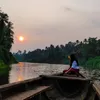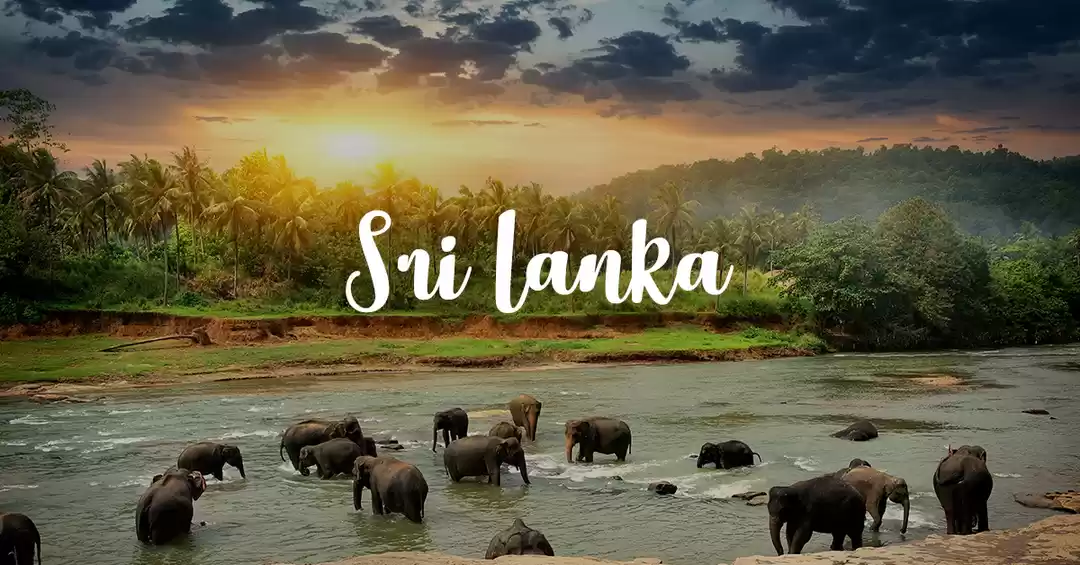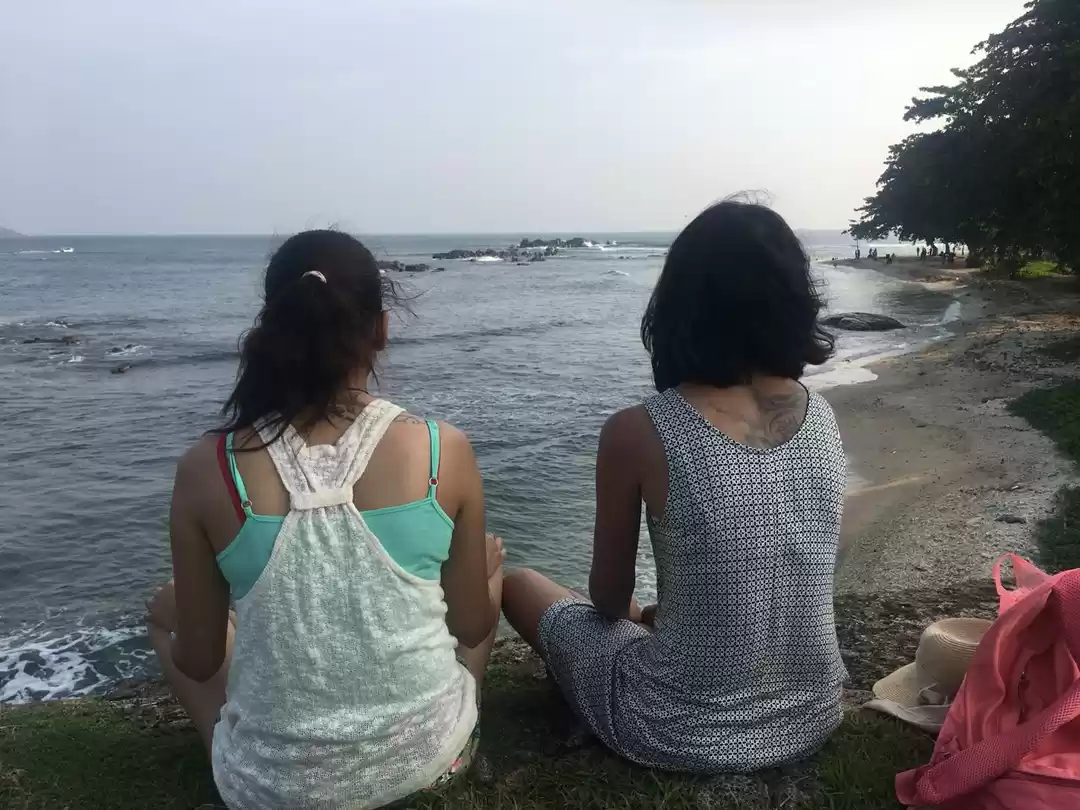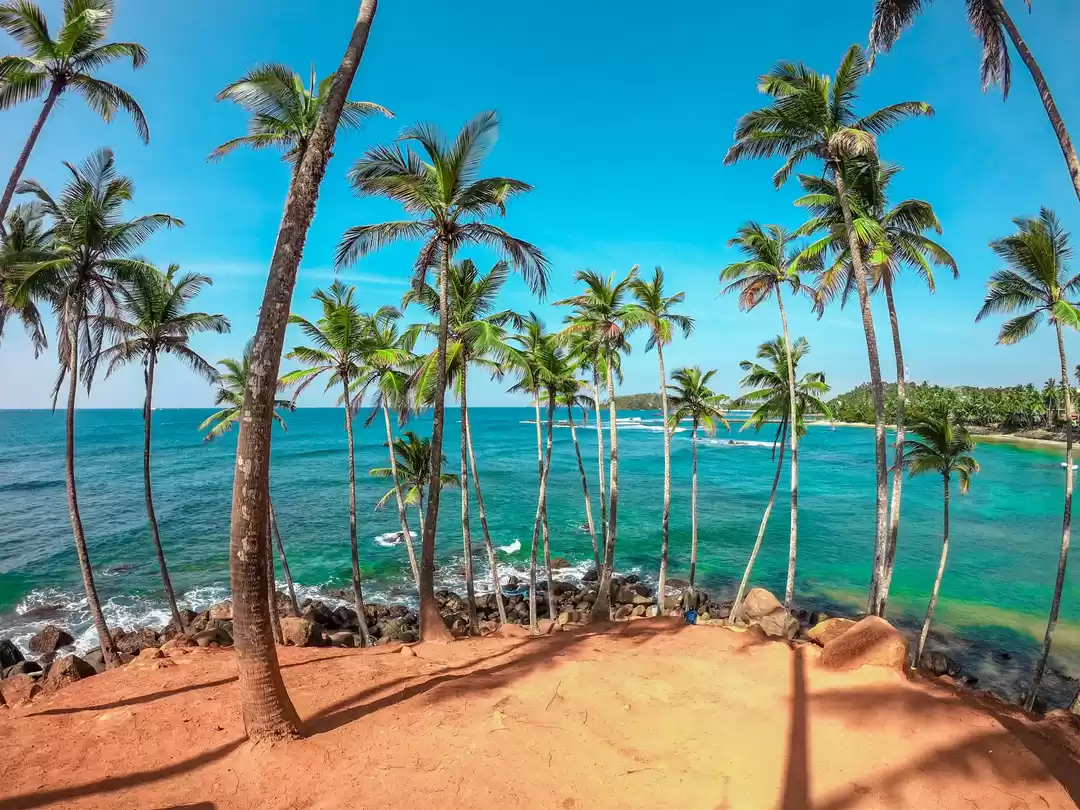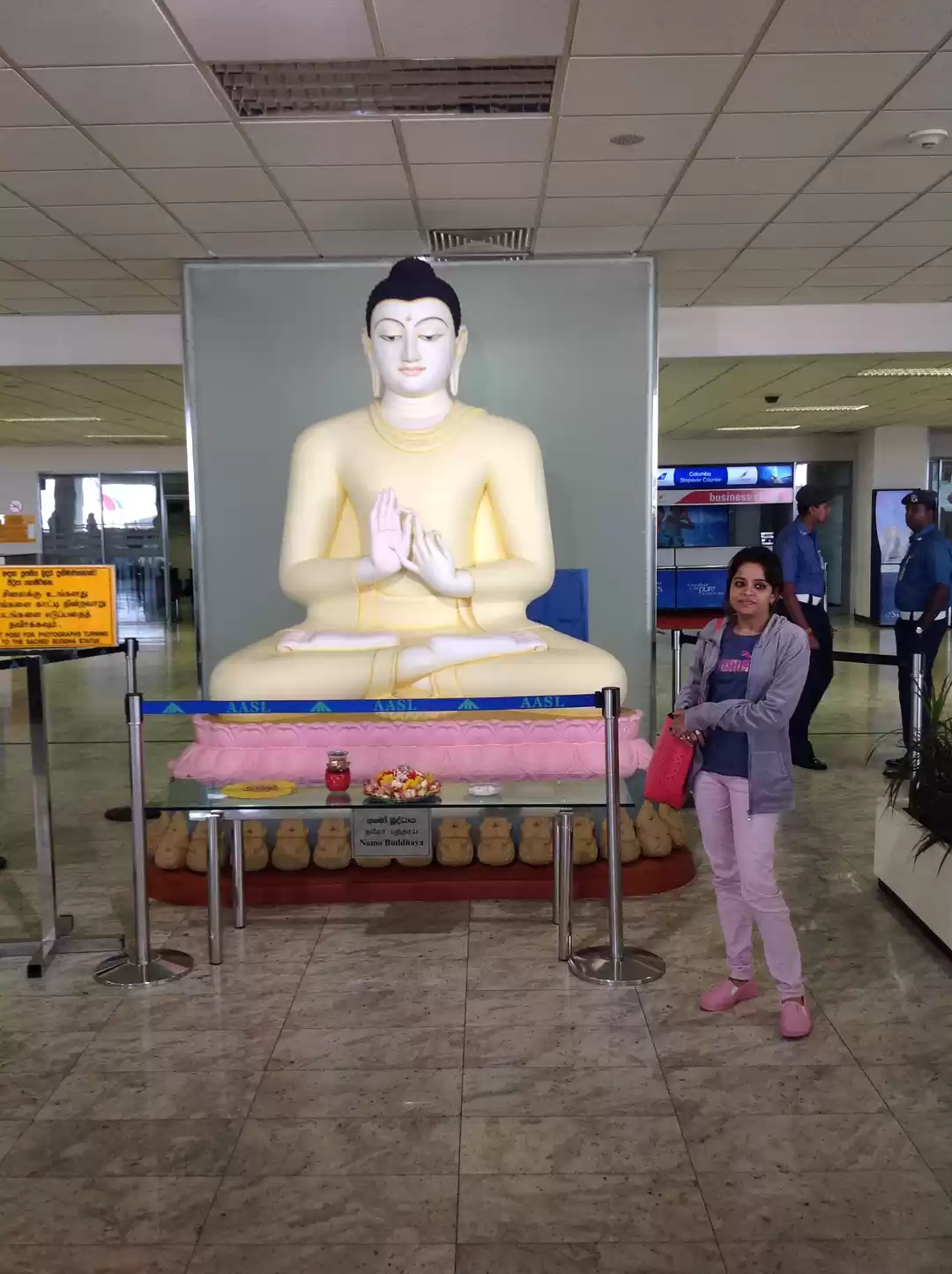“Ayubowan!” cheerfully sang the crew aboard the SriLankan Airline, as they humbly welcomed passengers into their aircraft with hands joined, heads bowed and undeterred smiles.
I was most excited to travel to “Sri Lanka” – the stunning island country previously called ‘Singhala’, located southeast of the Indian subcontinent. I had prepared myself for this much awaited sojourn by grasping a lot of information about this unique ‘tear-drop’ shaped landmass. Sri Lanka or ‘Ceylon’ has been an integral part of India from the days of the Ramayana, to being the land of Buddhism after India.
Of late, Ceylon has steadily been rising on the popularity meter among tourists from all over the world, who look for an island-getaway for vacationing in the tropical region.
We had an engaging itinerary spanning six days, covering various geographical landmarks, each famous for its own distinctive feature, so that me and my family could get a fair idea about Sri Lankan diversity by the end of the programme.
Day 1:
Negombo:
The plane touched down the “Bandaranaike International Airport” late at night, from where we were transferred to ‘Negombo’ situated 10 km away. It’s a small yet interesting beach town known for its fishing industry. Though I couldn’t make out the charm of this town in the dark, early morning in Negombo was a different experience! I stood in the balcony of our hotel room gaping at the unadulterated sight of nature in the form of a clean sandy beach lined with some palm trees; could also see some fishermen at a distance getting ready with their sailboats to embark on their day’s ‘catch’.
To me, it seemed like a perfect way of welcome!
I cannot overlook this place in spite of the very short stay, especially for it is here where I relished some local delicacies for breakfast, for the first time such as the string hoppers, rice milk pudding, sambol and pancakes with egg.

Pinnawala:
We were at Pinnawala, an exclusive elephant orphanage camp which dedicatedly takes care of over 90 elephants, captured from the forests island-wide. These animals are sheltered, protected and given timely attention in terms of their food, bath and health by a troupe of sincere caretakers.
Really, it was heartening to see so many jumbos and all the more stirring to see the way they were tendered. There were particular enclosures where tourists could personally feed fruit or milk to the elephants and at other cordoned areas they were allowed to graze and fondle amongst themselves at their own leisure.
‘Elephant Bay’ was the bathing spot for the elephants in the adjoining river surrounded with lush greenery. Smart restaurateurs have built their restaurants along this river bank at different levels from the ground so that visitors can have a hearty meal and at the same time revel in the sight of elephant herds letting their enormous bodies dip in the water. While some behaved naughtily, some played pranks with their mahouts and there were still some others which splashed water on the tourists.

Dambulla:
We then set off to ‘Dambulla Caves’, located at the central part of the island. Also known as the Golden Temple, it is a spiritual haven in Sri Lanka.
We climbed a flight of rugged stairs to reach on top of a rocky mountain where we found the entrance to the caves amidst breathtaking scenery. These caves were shrines used by Buddhist monks dating back to the 1st Century BC for their meditation and prayers. My jaws dropped when we entered a wide corridor housing five of the major shrine-caves which were filled with golden statues of the Buddha in many postures depicting his lifestyle and teaching styles. All the more interesting were the walls of the caves that were covered with mind-blowing frescos or paintings made with only natural and vivid colours, and yet seemed intact and beautiful even now.
This awesome combination of statues and paintings was certainly a treat to the eyes which gave a mystical aura to anyone standing inside these caves.
Feeling deeply satisfied, we signed off for the day.

Day 2:
Sigiriya:
Waking up in the ‘Pelwehera Village Resort’ was like a dream. When I stepped out of my room, I thought I was in a mini jungle retreat. A line of cottages equipped with plush interiors had been constructed in a vast expanse of land laden with generous tropical vegetation that formed a lovely green envelope and clear cobblestoned paths led the way through this ‘jungle’ to the restaurant or shopping arcade or swimming pool or even back to the cottage zone. I was enthused for this new day as I sipped my hot coffee, and to add to the morning glory, there was a light drizzle which filled the air with raw smells of earth.
In no time, we were speeding off to “Sigiriya – the Lion Rock”, a rock fortress of major historical value in Sri Lankan chronicles. If ancient ‘palm texts’ are to be believed, it once used to be the glorious capital of King Ravana who built a magnificent palace atop this citadel which is about 600 feet in height. The other version is that it used to be the royal township of King Kashyapa (5th century CE).
Whatever, for the tourists, this was a great monolithic structure, left to be discovered at one’s own imagination. At the ground level, there were various geometrically patterned gardens and water tanks. As the climb began the rock-cut steps seemed to get narrower. After a tedious ascent, one would be astonished to see the gallery of paintings on the outer surfaces of the mountain rock; very much similar to those found in Ajanta caves in India.
Moving ahead, we landed on a levelled platform where two giant ‘paws’ like those of the lion were present (supposedly, there was also a lion’s head sculpted above the paws but the head collapsed a long time ago) marking them as the actual entrance beyond which we had to take some man-made staircase built along the side face of the rock to further reach to the top. This was the best part of this adventure, because here one has to win over their acrophobia while scaling the zig-zag stairs to be at the summit.
At such a height, one can witness the thick forest on the surrounding land far below and can’t help but only wonder at the choice of location for the King’s dwelling.
At last, we reached the summit! I felt like I was on top of the world! I was awestruck when I saw the remains of the site, much like what we have heard of Machu Picchu in South America; and it just convinced me to accept the fact that the King of Sinhala indeed lived in a castle right here.
Sigiriya is an invigorating feat for climbers even today. With a sense of achievement we returned all the way down along the same pathway.

Kandy:
An appetizing lunch at a Spice Garden also proved to be enlightening in terms of understanding the therapeutic wealth in the island, which is one of the significant reasons for SriLanka’s escalation in global acclaim.
From here, we drove on the winding hilly route to Kandy, a prominent hill station, renowned as the cultural and religious capital of Ceylon.
That evening was very relaxing at our hotel. We got a chance to attend a vibrant and extravagant cultural dance programme after which we retired to bed.
Day 3:
Kandy:
The imposing building structures of Sri Dalada Maligawa or the Sacred Tooth Relic Temple behind the Kandy Lake bathing in the rays of the morning sun looked picture-perfect.
This Buddhist temple is a part of the royal Kandyan Palace and holds high esteem due to the veneration of the ‘tooth relic’ of the Buddha, preserved here which is revered by many devotees.
The Temple was astounding. Though it had simple exteriors, the interiors of the temple were opulent. Grand frescos adorned the walls, rich wooden architecture defined the doors, windows, railings and ceilings, and a golden canopy protected with a golden fence housed the main deity or the ‘tooth’ which was enclosed in a stupa-shaped golden casket guarded with long elephant tusks.
We went up and down, passed by many rooms and corridors and saw divine statues of Buddha studded with precious gemstones. I offered a lotus flower, a ritual appreciated by the locals, and thanked the Almighty for giving me that blissful opportunity to be present inside the holy altar with my family.
Kandy sprung a surprise to me as it is not only celebrated for its heritage but also turned out to be a shopper’s delight. I was bewildered at the craftsmanship of the artisans here when I looked at their exquisite pieces of wood carvings; every work in wood stood out with life that held the pride of its maker as it was made to perfection and finesse like nowhere else.
Next was the bewitching eye lock with Sri Lanka’s treasure – umpteen numbers of coloured gems originally mined in the island itself which is unparalleled to anywhere else in the world by quality. We got to realize the supreme expertise of the gemmologists in this country when we observed the size, lustre, cuts and refractive index of a variety of precious stones such as the sapphires, amethysts, rubies, emeralds etc. and clearly this is the warranty for which celebrities all over the world are infatuated with Sri Lankan gems.


Day 4:
Nuwara Eliya:
All through, the meandering roads of the scenic tea-clad mountains in Nuwara Eliya, was a respite away from the bustling towns of Sri Lanka; a highland about 6000 feet high with a cool climate contrasting to the heat and humidity in the other parts of the island. It is a mesmerizing verdant countryside ideally suited for tea plantations making it the third largest exporter of tea in the world.
Although this pocket of land looks infinitesimal on the already elfin isle in the map of Sri Lanka, it only seems endless and boundless in reality. It is rightly referred to as ‘Little England’ as it has tints of the British community influences left over from the colonial era.
We drove for many hours within the picturesque landscape enjoying the aroma of tea, halting at frequent intervals for a ‘photo-stop’ in the irresistible and transcendental panorama, before we finally came to ‘Bluefield Tea Gardens’ – a tea factory where we had a walk-through of the manufacturing process of the famed ‘Ceylon Tea’ and had a first-hand exposure of how the quality of tea is graded.

Seeta Eliya:
Then, we proceeded to the Sita Temple at Seeta Eliya. This is the ‘Ashoka Vatika’ described in the Ramayana where Sita Devi was held captive until Hanumanji saw her here for the first time. His ‘footprints’ are found on some rocks here, one of the proofs based on which the authenticity of Ramayana is pledged by the Hindus.
The temple is located in quaint surroundings enriched with deciduous trees and gushing streams. We could also see the ‘Sanjeevini’ mountain (a mountain of herbs) from the temple, the one Hanuman carried all the way from the Himalayas to cure a diseased Lakshmana.
The serenity of this temple is beyond words; it was the most sacred moment of the tour for me.
Our night stay was at the ‘Queensbury’ hotel. It was a cozy British-styled bungalow and even the staff followed the decorum laid down by the English while catering to their guests. I was quite impressed with this courtesy and all the more flabbergasted at the ‘black and white’ snapshots of the yesteryears in the hotel lobby, when Sri Lanka was totally undeveloped and was just a meek kingdom. The transformations of this nation to present day have been tremendous and quite incredible.
Day 5:
Enroute to Beruwala:
We were traversing the hair-pin bends of the tea mountains, nearly a hundred and fifty of them, for more than half a day. It was a very long cruise wading through tea estates with continuous step-cultivation pastures of tea, dotted with waterfalls, amidst the green hue which is why it has aptly been nicknamed as the “Emerald Island”.
Eventually we arrived at another realm of Sri Lanka. We had a late lunch break at ‘Kitulgala’, a rainforest town beside the sprightly and bouncy Kelani river. The Plantation Hotel located inside the temperate forests and hence dressed in thick foliage, was an outdoor themed eatery beside the river, from where we satiated our taste buds as well as cheered those enthusiasts who dived in for a diverse range of water sport activities.
Post lunch we geared up for the beach town of Beruwala on the west coast, which was still four hours away.
Day 6:
Balapitiya:
I couldn’t help but wake up to another inspirational morning in Beruwala at the Palms Resort. This beach side resort held its own splendour much different from all our other stays in that, the balcony of the room threw open to an embracing view of the ocean whose foamy waves kept teasing the sands on the coastline by hitting back and forth. I went for a brisk walk on the beach and had a rejuvenating swim early enough to get ready quickly to depart for a thrilling ‘Madhu River Safari’ in Balapitiya, a hamlet along the coast.

This was nothing but a naturally grown marshy mangrove verdure that is being capitalised to attract tourists by taking them out on a motorised boat ride. The high point of this outing is when the boat is driven inside ‘mangrove caves’ – a canopied formation by the intermingled branches of the low-lying mangroves. This was definitely a one of a kind hair-raising experience.
Colombo:
Like any other commercial capital city, Colombo was neither different. We breezed through the heavy traffic, high-rise buildings, malls and beaches to venture straight into the Gangaramaya Temple; a busy temple complex being the biggest crowd-puller in Colombo; comprises of a museum, basically an extraordinary collection of bejewelled items, embellished statues of Gods, intriguing artefacts and antiques.
Two things I found queer – the smallest Buddhist statue is found here enclosed in a case which people can view with a magnifying glass and also homage to a miniscule ‘hair relic’ of the Buddha inside another secure coffin.
Additionally, a gigantic Bodhi tree in the courtyard, along with a white Stupa reinforces the peace and tranquillity of the environs in the minds of the people.

***
Thus, we were at the end of a well-planned holiday with loads and loads of memories to take home.
SriLanka is truly a hidden jewel in South Asia.
I hope this travelogue would surely mean a fitting tribute to the Sinhalese hospitality and cleanliness.

